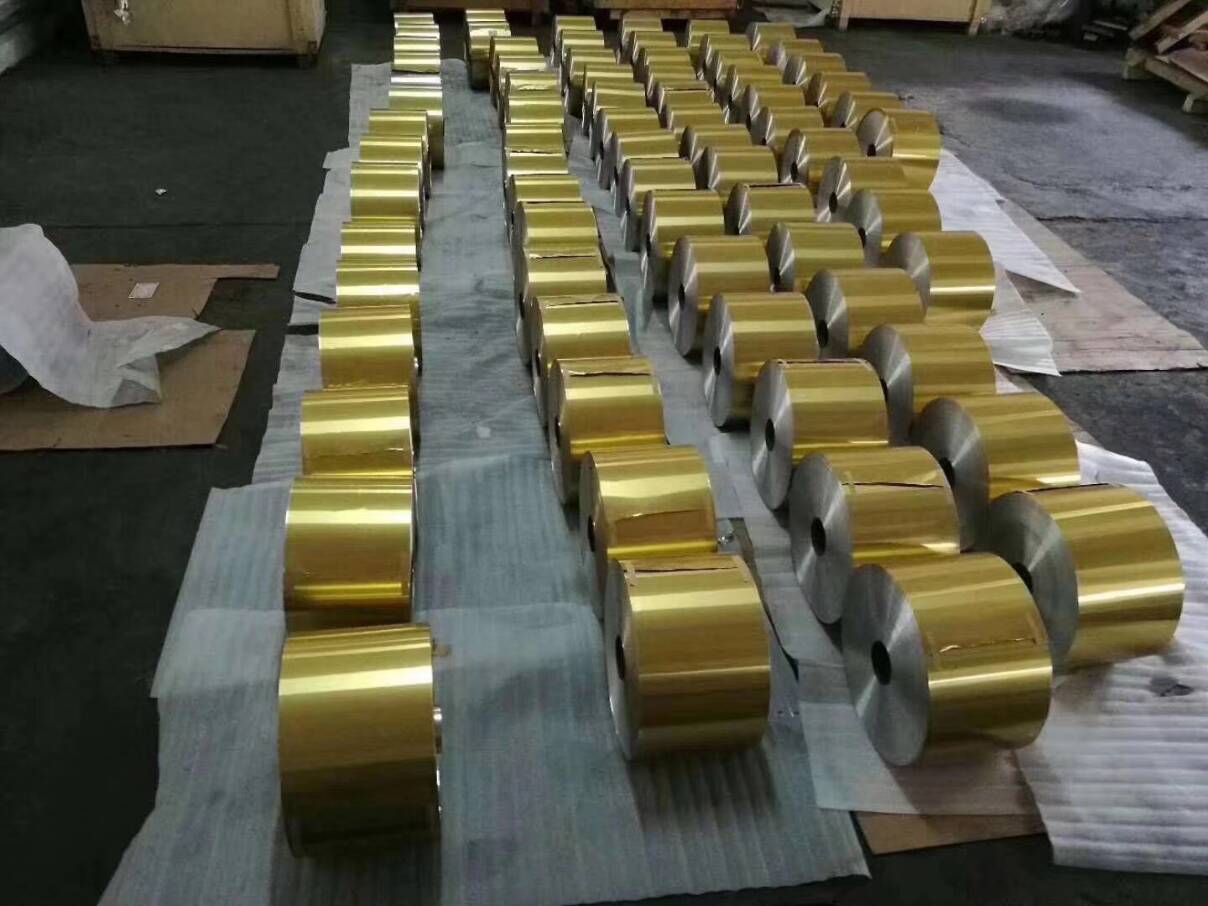In consideration of performance and cost-friendliness, the most appropriate fin material for finned block heat exchangers is Aluminum. Aluminum is more advantageous for its high transmission, resistance and lightness as well as being cheap and easily accessible. However, in highly corrosive environments that are acidic, salty or with water, Aluminum fins can in time degrade to such an extent that they can not provide the required potential. In such severe conditions, special coating materials are used to extend the useful life of the exchanger.
The most commonly used coating material for protecting metal surfaces from salty or acidic environments is epoxy. The resistance of epoxy coated Aluminum to corrosion delivers satisfying results in many industrial applications commonly encountered in practical applications. The epoxy coating method is used as the most economical and effective method particularly in protecting metal surfaces exposed to the corrosive influence of the humid and salty air in regions with marine climates.
Various experiments have been conducted on various epoxy samples in order to determine the performance of epoxy coated Aluminum as fin material in heat exchangers. Tests conducted in accordance with ASTM B117(5% NaCI, 35°C) indicate that the resistance of epoxy coated Aluminum samples to corrosion to a salty environment is such that it will enable them to last 4-7 times as long as non coated Aluminum. The resistance of epoxy coating to diluted acids (2% HCI, 2% H2S04) is also quite high. The loss of mass in epoxy samples immersed in trichloroethylene for 5 minutes is below 1%. When coated with epoxy, Aluminum also exhibits perfect resistance to water vapour. No change has been observed in epoxy samples kept for 15 minutes at 200°C. All these attributes clearly demonstrate the importance of epoxy coating in exchangers used in salty and acidic environments.

In cases where the corrosive effect of liquid water is a more important factor than that of acid and salt, the need arises for a coating on which the water can be removed without staying on the fin for long. These coatings are classified under the general term of hydrophilic. This term is used to represent materials that are not easily wetted and they enable the fluid to flow easily off the surface. Hydrophilic coatings are particularly effective in environments of excessive condensation, to protect the exchanger from the corrosive effect of water. Water collects on the uncoated surface of the metal in large droplets. This leads to corrosion of the metals by the droplets, with the aid of the air flowing over the fins. Furthermore, the accumulated water droplets pose a resistance to the air flow and have a detrimental effect on the capacity of the exchanger. In order to prevent accumulation of water droplets on the surface, the friction coefficient between the droplets and the surface should be decreased. Hydrophilic coating, by virtue of low surface tension, enables water droplets to flow off the surface without facing a lot of resistance. On coated surfaces, due to the low angle by which the droplets wet the fin surface, water does not conglomerate in large droplets and disperses easily. Thus undesired accumulation is prevented and long operation of the exchanger at high performance is ensured. The controlled removal of the condensed water from the system is highly beneficial in protecting the other peaces within the system from the harmful effects of water as well.
Hydrophilic coating also exhibits a fine performance in providing protection against water in high temperature and salty environments. It has been determined that Aluminum surfaces with blue hydrophilic coating can last 3 times longer under 5% NaCl spray than naked Aluminum surfaces (150 hours for naked Aluminum versus 500 hours for hydrophilic coated Aluminum). Furthermore, no change has been observed in the blue hydrophilic coating kept for 5 minutes at 200°C. By virtue of these attributes, heat exchangers with hydrophilic coated Aluminum fins can preserve their high resistance to the corrosive effect of the water in the environment also under severe conditions.
Thanks to coatings applied on Aluminum finned heat exchangers, the corrosive resistance of metals that are costly and difficult to process can be attained in a more economical way. The important point in this is to determine the need accurately and to apply the coating that will deliver the required resistance properties. It must be kept in mind that the application of coating in places where it is not needed will lead to unnecessary costs and that exchangers to which that coating which is required by the operating conditions has not been applied will not be long lived.
The following table includes information on the technical properties of coating materials
(Table 3.2) and their areas of application (Table 3.3).
PROPERTIES | Epoxy | Hydrophilic Coating | |||
Resistance | to | Perfect / Good | Perfect / Good | ||
Trichloroethylene | |||||
Resistance to M.E.K. (methyl | 100 impact pairs | 200 impact pairs | |||
ethyl ketone) | |||||
Resistance to Acid | Perfect / Good | Weak | |||
(2% HCl, 2% H2SO4) | |||||
Resistance To Salt Spray | Perfect / Good | Perfect / Good | |||
Resistance to Water Vapor | Perfect | Good / Medium | |||
(121° C / 3 0 minutes) | |||||
Table 3.2. Technical Properties of Epoxy and Hydrophilic Coating
MATERIAL | RECCOMENDED AREA OF APPLICATION | ||||
Regular Aluminum Fin | • Normal atmospheric conditions (where the corrosive effect is | ||||
Al 1100/8006/8011 | not high) | ||||
Epoxy Coated Fin | • | Seaside | |||
• | Ships | ||||
• | Thermal plants | ||||
• | Tobacco processing plants | ||||
• Cheese production and storage facilities | |||||
Fully Epoxy Coated Coil | • | Yoghurt production facilities | |||
• | Cheese production and storage facilities | ||||
• | Corrosive environments | ||||
Hydrophilic Coated Fin | • Use of DX and water-side cooling coils particularly in hygienic | ||||
plants and places of high humidity | |||||
Copper Fin | • Seaside | ||||
• | Ships | ||||
• | Highly corrosive environments | ||||
Epoxy + Polyurethane | • | Highly corrosive environments | |||
• | High humidity | ||||
• | Gas turbine coils | ||||
Table 3.3. Comparison of Exchangers with Coating to Exchangers without Coating According to Areas of Use
Also we can make aluminum finstocks: Aluminum Foil Coating Blue / White, Epoxy Coated Aluminum Foil, Fin Stock Colorful Epoxy Coated Aluminum Foil 0.095MM With Various Width, Soft Temper Mill Finish Aluminum Foil Coated Blue / Golden With 0.2MM Various Width, Blue / Golden Epoxy Coated Aluminum Foil 0.18MM Width In Heat Exchanger, Anti Bacteria Coil Aluminum Stock Coated Golden 0.16MM For Condenser Coil, Temper O Aluminum Strip Alloy 8011 0.30MM For Heat Exchanger , Condenser; 0.32MM Thickness Aluminum Coil Strip Temper O With Mill Finish Surface, Alloy 8011 Aluminum Strip 0.35mm Thickness For Heat Exchanger , Condenser , Evaporator; Temper H24 Aluminum Coil Stock 0.095mm Thickness Alloy 8011 In Heat Exchanger, Air Conditioner Aluminum Fin Stock 0.12mm Various Width With Blue / Golden, 0.095MM Blue Hydrophobic Aluminum Fin Various Width Strip For Air Conditioner, Colorful Aluminum Fin Stock 0.115MM Various Width For Air Conditioner, Alloy 8011 ,1100 Hydrophilic Aluminum Foil 0.105MM With Various Width




QR Code
